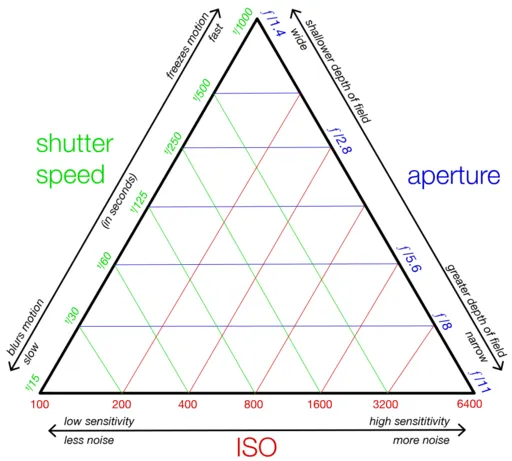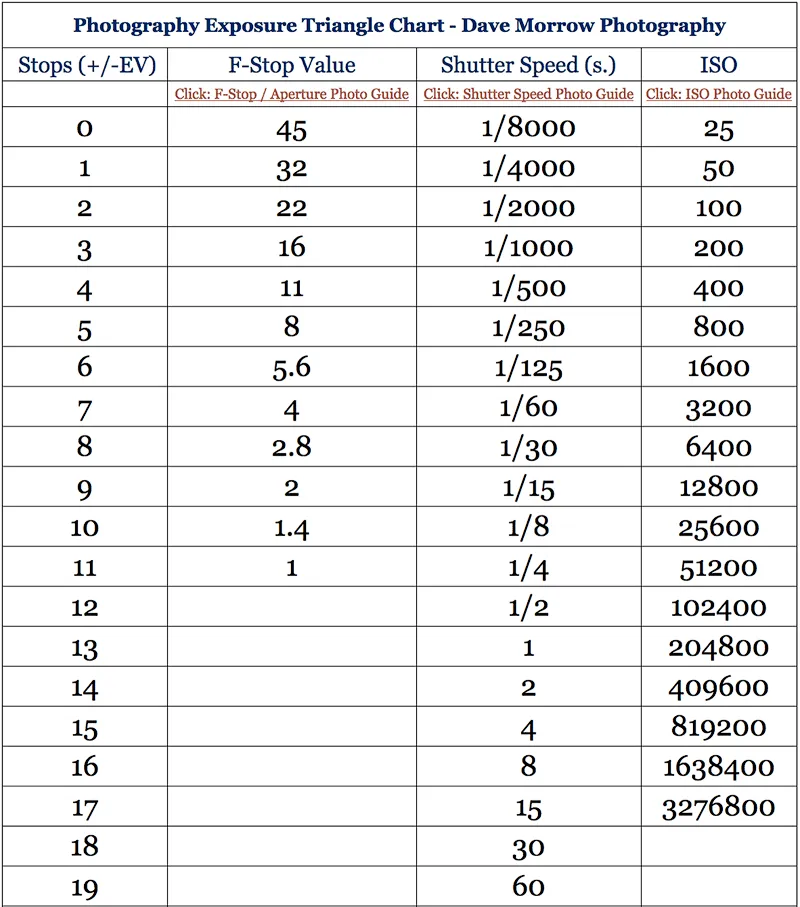The exposure triangle is a fundamental concept in photography that represents the three essential elements that determine the exposure of an image. These three elements are:
- Aperture: Aperture refers to the opening in the lens through which light passes to enter the camera. It is measured in f-stops, where a smaller f-number (e.g., f/2.8) represents a larger aperture and allows more light to enter, while a larger f-number (e.g., f/16) represents a smaller aperture and allows less light to enter. Aperture also affects depth of field, with larger apertures (smaller f-numbers) producing a shallower depth of field.
- Shutter Speed: Shutter speed, or exposure time, is the amount of time that the camera's shutter is open, allowing light to strike the camera sensor. It is measured in seconds or fractions of a second. Faster shutter speeds (e.g., 1/1000s) allow less light and are suitable for freezing fast motion, while slower shutter speeds (e.g., 1/30s) allow more light and are used for capturing motion blur or in low-light conditions.
- ISO (International Organization for Standardization): ISO represents the sensitivity of the camera sensor to light. A lower ISO (e.g., ISO 100) indicates lower sensitivity and is suitable for bright conditions, while a higher ISO (e.g., ISO 1600) indicates higher sensitivity and is used in low-light situations. However, higher ISO values may introduce digital noise into the image.
Balancing these three elements is crucial to achieving a well-exposed photograph. Adjusting one element often requires compensatory adjustments to one or both of the other elements. This relationship among aperture, shutter speed, and ISO forms the exposure triangle, and understanding how changes in one element affect the others is essential for mastering exposure in photography.

